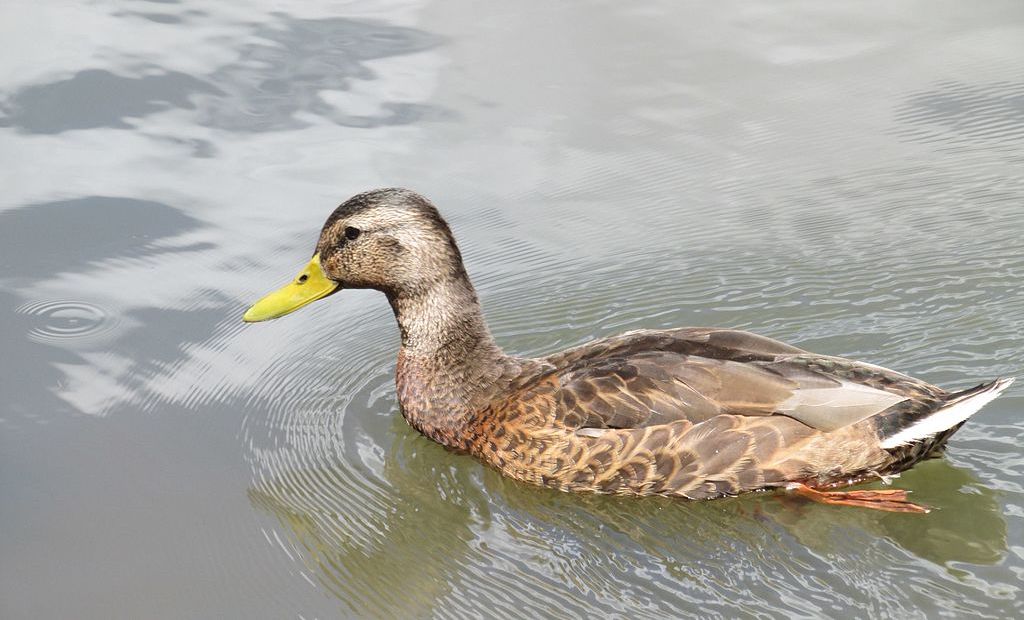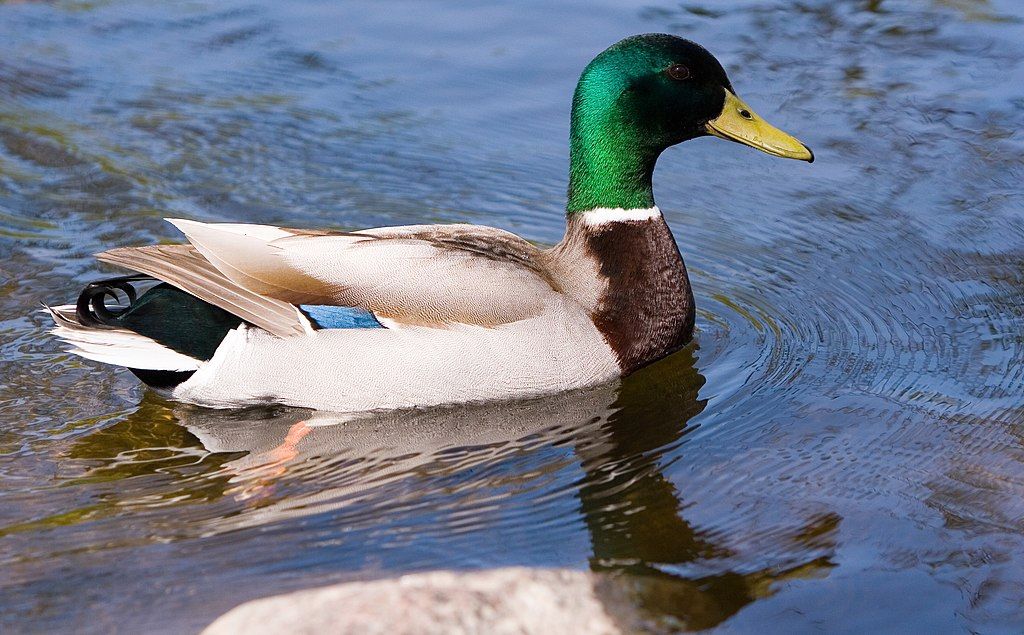
7 July 2021
In the middle of summer the male ducks disappear — or so it seems. The males are still present but they look like females because they’ve molted into eclipse plumage.
Let’s take a look at mallards to see how this works.
Mallards (Anas platyrhynchos) replace all their feathers once a year but males and females do it at different times. Females molt while nesting (February–May); males molt after the breeding season (June–August).
The molt begins with a complete loss of remiges (wing flight feathers) that takes only a few days, rendering the bird flightless for 3-4 weeks. Fortunately males simultaneously replace their brightly colored body feathers with dull ones so they can hide in dense marshes. Eclipse plumage keeps them out of danger.
Here’s the transformation.

Notice that the male’s head becomes mottled green (below) and then dull brown (photo at top).

Once the males have made this transition it’s a challenge to tell them apart from females but here’s a clue. Look at their bills. In the summer males have yellow or greenish-yellow bills while females have dull orange-ish bills.

Eventually the male starts to molt back to his typical plumage. Partway there he looks like this.

And by November he’s back to his normal flashy self in time to court his springtime mate.

This summer when you see a mallard, look at the bill. Maybe he’s a male in eclipse.
(photos from Wikimedia Commons; click on the captions to see the originals)
It is *so* challenging to ID birds this time of year. We’ve had so many juveniles in our yard that just don’t look quite like the adults….juvenile red-bellied woodpeckers with no red on their heads at all, juvenile eastern towhees with no orange on them, what I’m pretty sure is juvenile rose-breasted grosbeaks that look like females but no striping on the head, almost olive juvenile cardinals with just a hint of red, and an all gray bird that maybe was a juvenile starling, or maybe a catbird? I couldn’t figure that one out. Sometimes I get excited thinking I’ve spotted a new bird that I’ve never seen before, and then figure out it’s just the local babies growing up.
Wonderful, wonderful nature!!! Thank you, Kate!!